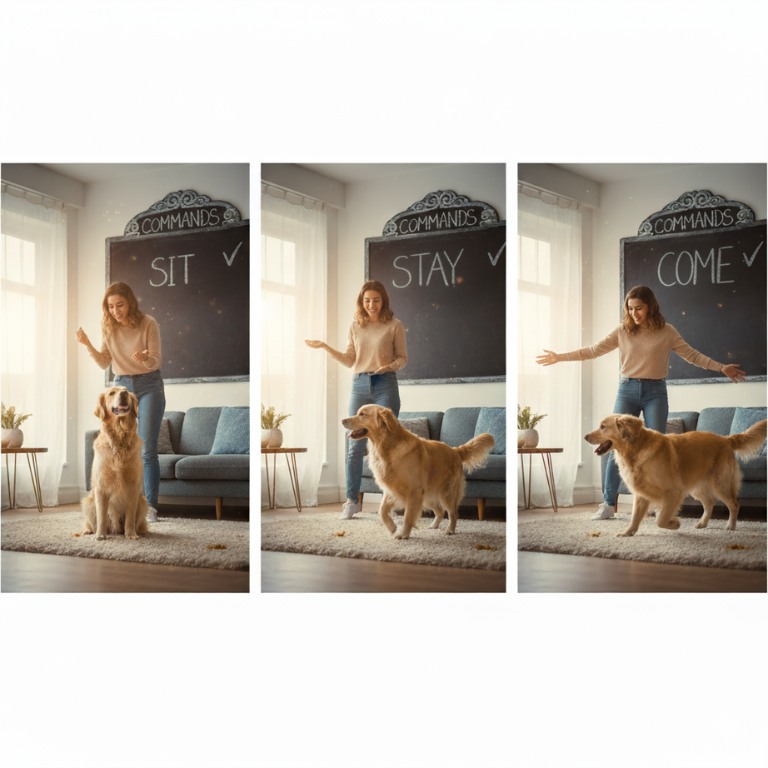Training and Behavior Tips: How to Improve Your Pet’s Well-Being in 2026
Good behavior doesn’t happen overnight — it’s the result of patience, consistency, and positive reinforcement. Whether you’re a first-time pet parent or an experienced one, understanding your pet’s behavior is essential to building a strong, healthy bond.
1. Start with Positive Reinforcement — Reward, Don’t Punish
Positive reinforcement is one of the most effective training methods. Instead of scolding or punishing, reward your pet for good behavior. This builds trust and helps your pet associate learning with happiness, not fear.
How it works:
-
Reward your dog or cat with treats, praise, or playtime when they follow a command or behave well.
-
Ignore or redirect unwanted behavior rather than yelling.
-
Keep training sessions short (5–10 minutes) and fun.
Example:
If your dog sits on command, immediately say “Good job!” and offer a small treat. This encourages repetition and excitement for the next command.
Wellness Tip: Use healthy training treats like small pieces of freeze-dried chicken or carrot slices. Avoid high-sugar or artificial snacks.

2. Build a Routine — Pets Thrive on Consistency
A stable routine helps pets feel secure and reduces anxiety. Feeding, walking, and training at consistent times give them a sense of control and structure.
Why it matters:
-
Predictability reduces stress and confusion.
-
Pets learn faster when they know what to expect.
-
Regular routines improve digestion and sleep quality.
Example:
Walk your dog every morning before breakfast. Over time, your pet will start to look forward to this daily activity — and behavioral issues like restlessness or chewing may decrease.
Wellness Tip: Combine exercise with bonding time. Use walks to practice commands like “sit,” “stay,” or “heel.”

3. Mental Stimulation Is Just as Important as Physical Exercise
Bored pets often act out — barking, chewing, or scratching can be signs of frustration or under-stimulation. Keeping your pet’s mind active improves focus and emotional balance.
How to stimulate their mind:
-
Use interactive toys like treat puzzles or wobble balls.
-
Teach new tricks regularly (even simple ones like “high five” or “spin”).
-
Hide treats around the house to activate their natural hunting instincts.
Example:
The Snail Snuffle Toy encourages your dog to sniff and search for hidden treats, promoting mental engagement while preventing boredom.
Wellness Tip: Rotate toys weekly so your pet doesn’t get tired of them. A new toy or activity reignites curiosity and focus.

4. Socialization — Confidence Through Connection
Socialization is essential for both dogs and cats. It helps them feel comfortable around people, other animals, and new environments.
Why it matters:
-
Reduces fear and aggression.
-
Builds confidence and adaptability.
-
Promotes calm behavior in public spaces.
Example:
Invite a friend with a calm dog for a short walk together. Keep the distance comfortable at first and reward your pet for staying relaxed. Gradually reduce the distance as they get used to each other.
Wellness Tip: Early socialization (from 8 to 16 weeks old for puppies) is key, but older pets can also learn with patience and gradual exposure.

5.Manage Stress and Anxiety Naturally
Pets can experience stress from loud noises, changes in routine, or separation. Recognizing these signs early helps prevent behavioral problems.
Signs of stress: pacing, hiding, excessive licking, or barking.
How to help:
-
Provide a safe, quiet space with their bed and favorite toys.
-
Use calming sprays or pheromone diffusers.
-
Try soothing background music or white noise.
Example:
If your cat hides during thunderstorms, prepare a cozy corner with their blanket and use a pheromone diffuser to help them relax.
Wellness Tip: Avoid over-comforting your pet during fear episodes. Stay calm — your energy influences theirs.

6. Teach Basic Commands — The Foundation of Good Behavior
Teaching your pet basic commands not only makes life easier but also strengthens communication and trust.
Essential commands:
-
Sit 🐾
-
Stay ✋
-
Come 🐕
-
Leave it 🚫
Example:
Practice “Stay” by having your dog sit, showing your palm, and taking one step back. Reward after a few seconds of success, then gradually increase the distance.
Wellness Tip: Always end training sessions on a positive note — with a treat or play session. This keeps your pet motivated for next time.

7. Encourage Calm and Relaxation
Relaxation is just as important as training. Pets who get enough rest are happier, calmer, and more obedient.
How to create a calm environment:
-
Provide a comfortable, orthopedic bed in a quiet spot.
-
Maintain consistent lighting and temperature.
-
Avoid overstimulation — too much noise or activity can cause anxiety.
Final Thoughts: Behavior Reflects Well-Being
Your pet’s behavior is a window into how they feel. A happy, confident pet is usually well-trained, mentally stimulated, and emotionally supported.
By using positive reinforcement, consistency, and mindful care, you can build a lifelong bond based on trust and joy.
Remember: Training isn’t about control — it’s about communication, respect, and love.
🛍️ Shop Now at Luna Pet Shop
Find everything you need to train, reward, and comfort your pet — from smart toys to calming accessories.
💬 Follow us on Facebook and Instagram for expert advice, product recommendations, and daily pet care inspiration.
📲 Hit “Follow” to stay connected with Luna Pet Shop — where happy pets come first!
